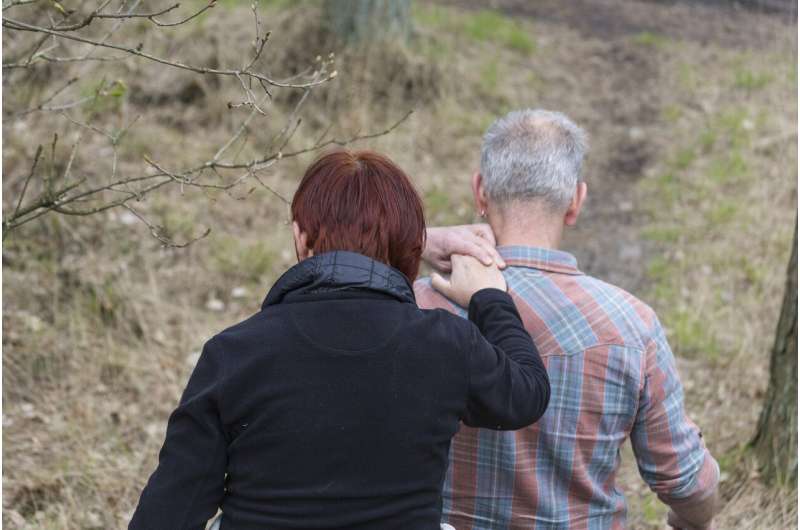Novel therapy for family caregivers reduces depression and boosts well-being

Family caregivers of loved ones with dementia often have high rates of depression and anxiety and physical problems related to chronic stress from their caretaking duties. A new study published in the journal Psychotherapy and Psychosomatics describes the first randomized controlled trial of a new therapeutic approach that seeks to build empathic imagination for caregivers.
Currently support groups are the most widely used psychotherapy intervention for family caregivers. “Although support groups provide caregivers with helpful information and an opportunity to share their experiences with each other, for many people they are not effective for managing the negative emotions associated with caring for a loved one with dementia,” says Felipe A. Jain, MD, investigator and director of Health Aging Studies at Massachusetts General Hospital (MGH).
Jain and his colleagues found that caregivers who participated in mentalizing imagery therapy (MIT) had lower rates of depression and anxiety and better well-being than caregivers who attended a traditional support group. The study also confirmed preliminary findings that MIT strengthened caregivers’ brain circuitry related to cognitive control and emotional regulation. “We were able to show that there is an underlying neurobiological basis for the improvements that were reported by caregivers in the MIT group,” says Jain. “This finding helps us understand how psychotherapies work and why it is so important that caregivers receive them. MIT is now the first therapy to show beneficial changes in the brain circuitry of caregivers.”
Although caregivers are empathic and compassionate, they may have difficulty reacting to a family member with dementia whose behaviors and emotions deviate markedly from their own. Caregivers may also struggle with shame and guilt regarding their own reactions and behaviors under chronic stress.
“MIT teaches mindfulness and guided imagery skills to help caregivers better understand the mind of their loved one and how they are reacting to that person,” says Jain. Participants learn to view emotional reactions to challenging situations from different perspectives and to feel more connected to their communities and their natural environment. The therapy also focuses on stress reduction and increased self-compassion. “This therapy pushes the boundaries of how we think about ourselves and interact with others and incorporates new views on self and identity,” says Jain.
The 46 caregivers in the pilot study were randomly assigned to the MIT group or a support group. Both groups consisted of four weekly 120-minute sessions. The MIT group participated in weekly mindfulness exercises, including low-impact stretching and breath-focused meditation, as well as specific guided imagery exercises that changed week to week. The support group focused on challenges each caregiver faced and psychoeducational topics related to caregiving.
MIT significantly outperformed the support group in improving depression, anxiety, mindfulness, self-compassion, and well-being. While participants were receiving the weekly group sessions, both groups showed similar improvements in self-reported depression symptoms. But by only one week after therapy ended, the positive psychological effects of MIT endured while the benefits faded for participants in the support group. At that point, depression symptoms were 41% lower than before therapy in MIT, but only 15% lower in the support group. The significant benefits for MIT persisted at follow up three months after the initial course of therapy. Similarly, happiness had increased by the end of the study by 20% in MIT but only 5% in the support group.
In addition, neuroimaging showed that the MIT group had robust and substantial increases in connectively in the emotional regulation circuits of the brain, which was not seen in the support group. The strengthening of connectivity correlated with the reduction in depressive symptoms and increase in mindfulness.
Source: Read Full Article



